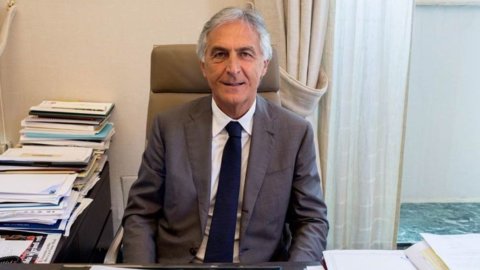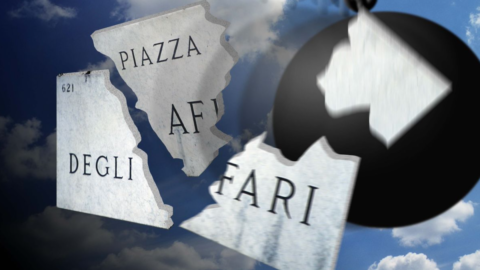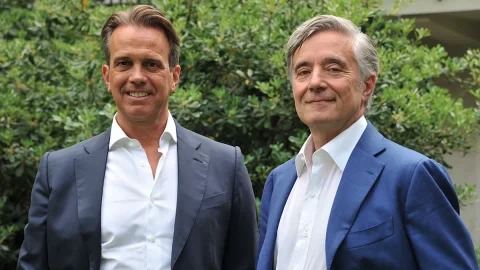Founded in Rome in 1923 by the Torlonia princes, still 100% owned by the family, the Banca del Fucino, which takes its name from the gigantic reclamation work on the Fucino plain in Abruzzo between the XNUMXth and XNUMXth centuries, it is today the oldest private Roman bank chaired by the fourth generation of its founders.
The bank has about 50 customers and is mainly present in Central Italy (it has a network of 32 branches, 31 of which in Lazio, Abruzzo and Marche, and 1 in Milan: it has 20 in Rome alone), where it represents the bank especially of entrepreneurs and high-end professionals.
The heart of the bank is increasingly made up of its private bankers, who are all employees and have an average portfolio to manage of 80 million euros. For each customer, the minimum threshold for entry to the private service is assets exceeding 1 million euros, excluding properties.
To tell the new course of Banca del Fucino and its increasingly marked transformation of the business towards private banking is Giuseppe Di Paola, general manager of the bank since 2001.
Director, these are not easy times for banks, the golden age is over and who knows if it will ever come back: what happens for a particular bank like Banca del Fucino which has retail but is increasingly oriented towards asset management and the private banking?
“The evolution towards private banking stems from the conviction that the commercial bank model we knew was obsolete and that we had to change the business model: for this reason we moved more and more towards private banking, opening two dedicated offices in Rome and one in Milan. The private sector already represents 50% of our revenues but is destined to grow. On an organizational level, we have created a special private banking division within the bank with investments in technology and organic hiring: ours is an internal business, we do not do financial promotion. We are a real financial boutique, which allows us to provide advice to clients of high standing in a personalized way, without conflicts of interest and with great operational flexibility. And the results are rewarding us”.
Does this mean you will be leaving the retail and corporate finance business?
“No, we will also continue to do retail and lending, but we plan to make private banking our core within 3-4 years, reaching a percentage weight on total revenues of around 70%. In addition to setting up a special division, last year we opened a branch entirely dedicated to private banking in the heart of Milan, in via Monte di Pietà, and another in the heart of Rome in via Po, in the Parioli-Pinciano district" .
Economic stagnation and above all low or even negative interest rates and the costs of a network of branches that no longer have a raison d'etre zero or reduce the profits of the banks: has this also weighed on your business?
“It's a danger that we too ran in part, but we moved in time. Precisely for this reason we believe that private banking will be the bank's growth engine over the next few years. Already in 2015, our total financial assets amounted to approximately 2,6 billion euro, which are divided almost half into direct deposits and half indirect, in the portion of 1,4 billion of indirect deposits for the first time the managed component has surpassed the administered one, i.e. government bonds. It is a very significant result which supports the strategic choices we have made and which we will support more and more. As far as branches are concerned, fortunately we have few of them, but we still plan to make the network more efficient, not by eliminating them but by merging some of them”.
What does Banca del Fucino look like in 2016?
“Despite the general difficulties of the entire banking sector, we are expecting a good 2016 also because our business is changing rapidly. Meanwhile, we closed 2015 with an interest margin of 30 million euro, a CET 1 Capital Ratio of 10,22% (above the minimum required of 8,5%) and a Total Capital Ratio of 13,85% (minimum required 10,5%). The intermediation margin was almost 63 million. Managed assets will grow again this year to double, according to our industrial plan, within 3-5 years”.
By innovating with respect to its traditional confidentiality, Banca del Fucino has decided to communicate more and better with its customers: why? And why does a customer choose Banca del Fucino? What is your distinctive element compared to the competition?
“Banca del Fucino was founded almost a century ago, in 1923, by the Torlonia princes as a financing institution for the gigantic reclamation and rearrangement work on the Fucino plain in Abruzzo, the largest hydraulic construction in united Italy. Now we are changing skin compared to the traditional commercial bank and a very thorough digitization plan is already underway; we are also introducing our private clients to an extremely personalized advisory model, through the dedicated assistance of a Private Banker and a multidisciplinary Portfolio Advisory team. We are a real boutique, which follows the customer in every step and which has the peculiarity of not selling its own products and therefore not having any conflict of interest. We are not an asset management company and we are not a product factory and this allows the customer to choose the best financial products. It is a fundamental element that makes the difference compared to the competition”.
Is there a growth plan for Banca del Fucino in the near future? And how are you going to finance it?
“The plan is to grow private banking above all without neglecting retail, through the hiring of private bankers which, however, will take place largely within the same company through training courses to ensure that an ever greater part of our 300 total employees deals with the management of private assets: at the moment only a sixth of our employees deal with this, we have a large internal reservoir but we will also hire from outside. We have already recruited 20 private bankers. The growth plan is totally self-financed: we have the means to support it and to date neither partnerships nor stock market listing are on the agenda."
In times of financial turbulence and high stock market volatility, what do you recommend to your clients?
“The first 6 months of 2016 were difficult for the markets but we managed to defend the value of our investments, despite the volatility. Those who have invested with us have not lost any money, despite the fact that the Italian Stock Exchange has lost more than 20% since the beginning of the year. After the Brexit referendum and the Spanish elections, which will be known shortly, we think the markets will be ready to restart. The secret is always that of weighted diversification of investments, both in reference to the different markets and the different geographical areas”.
Who is your clientele and what is the typical customer?
“First of all entrepreneurs and professionals, who however are changing their approach to the bank. Before, they were traditional customers who mainly had lines of financing and who only then evaluated the opportunity to also use our private service. Today they approach us directly for the private service. Then we have families with large real estate assets, but to a lesser extent. Contrary to what one might believe, in Italy 40% of the wealth of HNWIs (High Net Worth Individuals: people with assets exceeding 500.000 euros, excluding real estate) originates from entrepreneurial work while only 23% belongs to pensioners and the 2% to heirs”.
Director, wealth is growing, but polarities are also growing. In other words: the rich are getting richer. For someone like you who primarily serves an affluent clientele, does that mean your audience can potentially grow even more?
“Potentially yes, in fact, as I have already said, we intend to double the assets under management within 3-5 years. According to AIPB (Italian Private Banking Association) data, at the end of 2014, Italian households of high wealth (HNWI) reached 633.000. Availability has grown steadily in recent years, going from 859 billion euros in 2009 to 983 billion at the end of 2014. And despite the crisis scenarios, in the first quarter of 2015, the assets managed by private institutions increased by 7,8%, going from 501 billion in December 2014 to 540 billion in March 2015. Consider that the wealth of families in Lazio, where Banca del Fucino has its center of gravity, represents around 9% of the total wealth of Italian families and that it is mainly concentrated in Rome where we have strong roots. Therefore, there is room for growth, but we must always be able to offer services of great quality and absolute independence, as we try to do every day at Banca del Fucino”.





